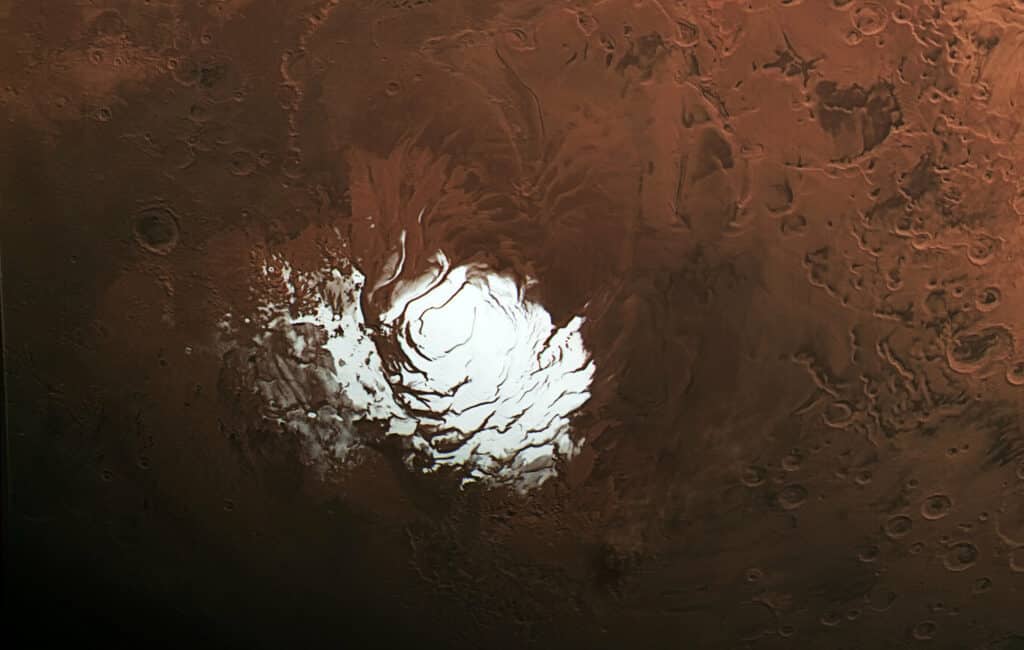The theory that liquid water survives on Mars evaporated as what was thought to be a vast “lake” beneath the Red Planet’s south polar cap was found to be nothing but a dusty mirage. The illusion is caused by radar bouncing off volcanic rock, according to new research.
Three years ago Italian astronomers picked up signs of a 20 mile-wide body of liquid water a mile under the ice cap. But analysis released earlier this year shows the reflections matched those from plains found all over the surface of Mars.
Scientists at the University of Texas at Austin team say it’s a more plausible explanation, especially considering the unlikely conditions of the cold and arid area.
“For water to be sustained this close to the surface you need a very salty environment and a strong, locally generated heat source,” explains lead author Dr. Cyril Grima in a statement. “But that doesn’t match what we know of this region.”
The mirage dissolved when an imaginary mile-thick global ice sheet was added to a radar map, showing how terrains would appear. It allowed the UT team to compare features across the entire planet with those under the polar cap. Grima noticed bright reflections, just like those seen in the south pole, but scattered across all latitudes. In as many as could be confirmed, they fitted the location of volcanic plains.
On Earth, iron-rich lava flows also leave behind radar-reflecting rocks. Other possibilities include mineral deposits in dried riverbeds. Either way, figuring out what they are could answer important questions about Mars’ history.

Although there may not be liquid water trapped under the southern polar cap, there is plenty of water ice on Mars, including in the thick polar caps. In fact, the results hint at Mars’ wetter past.
Geophysicist Dr. Isaac Smith, who was not involved in either study, says the radar signatures are a kind of clay from water-eroded rocks. Last year he found Earth-based clays reflected radar, just like the bright spots in the 2018 study.
“I think the beauty of Grima’s finding is while it knocks down the idea there might be liquid water under the planet’s south pole today, it also gives us really precise places to go look for evidence of ancient lakes and riverbeds and test hypotheses about the wider drying out of Mars’ climate over billions of years,” said Dr. Smith, of York University in Toronto.
Grima’s map is based on three years of data from MARSIS, a radar instrument launched in 2005 aboard the European Space Agency’s Mars Express. He plans to dig further into the data to see what else MARSIS can turn up about Mars.
Dr. Smith explained the study is a sobering lesson on the scientific process that is as relevant to Earth as it is to Mars. “Science isn’t foolproof on the first try. That’s especially true in planetary science where we’re looking at places no one’s ever visited and relying on instruments that sense everything remotely,” he said.
He and Dr. Grima are now working on proposed missions to find water on Mars with radar – both as a resource for future human landing sites and to search for signs of past life.
The research is published in the journal Geophysical Research Letters.
Report by South West News Service writer Mark Waghorn.












